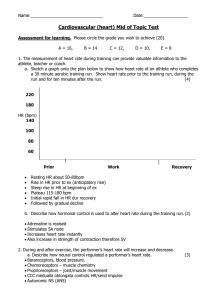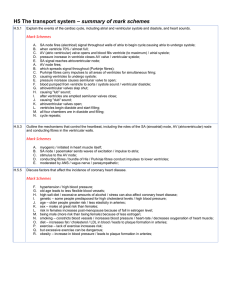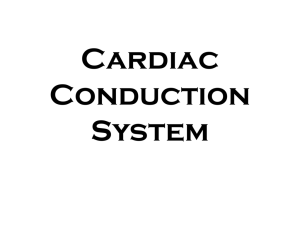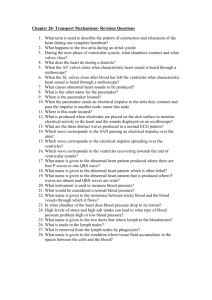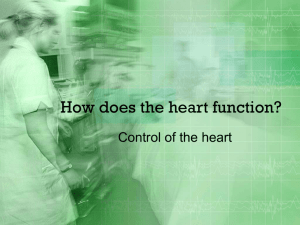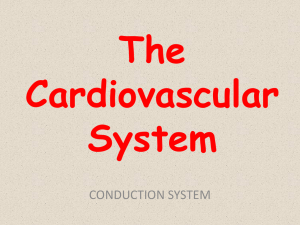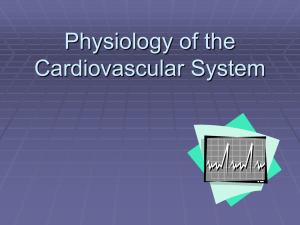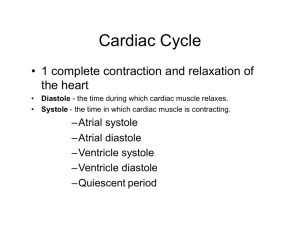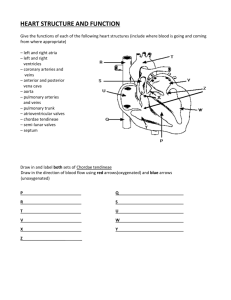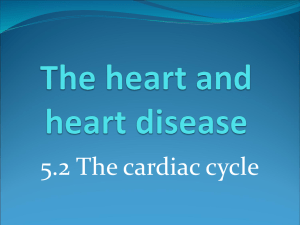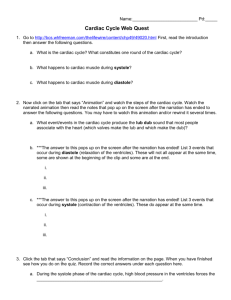Answers to `Revise as you go`
advertisement
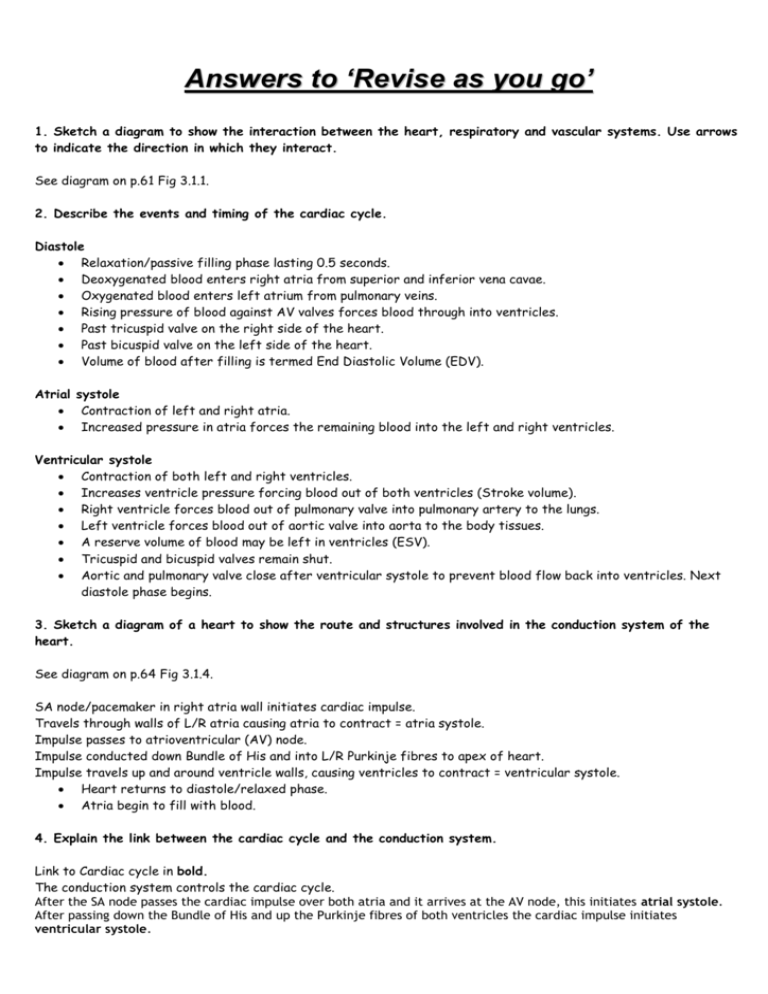
Answers to ‘Revise as you go’ 1. Sketch a diagram to show the interaction between the heart, respiratory and vascular systems. Use arrows to indicate the direction in which they interact. See diagram on p.61 Fig 3.1.1. 2. Describe the events and timing of the cardiac cycle. Diastole Relaxation/passive filling phase lasting 0.5 seconds. Deoxygenated blood enters right atria from superior and inferior vena cavae. Oxygenated blood enters left atrium from pulmonary veins. Rising pressure of blood against AV valves forces blood through into ventricles. Past tricuspid valve on the right side of the heart. Past bicuspid valve on the left side of the heart. Volume of blood after filling is termed End Diastolic Volume (EDV). Atrial systole Contraction of left and right atria. Increased pressure in atria forces the remaining blood into the left and right ventricles. Ventricular systole Contraction of both left and right ventricles. Increases ventricle pressure forcing blood out of both ventricles (Stroke volume). Right ventricle forces blood out of pulmonary valve into pulmonary artery to the lungs. Left ventricle forces blood out of aortic valve into aorta to the body tissues. A reserve volume of blood may be left in ventricles (ESV). Tricuspid and bicuspid valves remain shut. Aortic and pulmonary valve close after ventricular systole to prevent blood flow back into ventricles. Next diastole phase begins. 3. Sketch a diagram of a heart to show the route and structures involved in the conduction system of the heart. See diagram on p.64 Fig 3.1.4. SA node/pacemaker in right atria wall initiates cardiac impulse. Travels through walls of L/R atria causing atria to contract = atria systole. Impulse passes to atrioventricular (AV) node. Impulse conducted down Bundle of His and into L/R Purkinje fibres to apex of heart. Impulse travels up and around ventricle walls, causing ventricles to contract = ventricular systole. Heart returns to diastole/relaxed phase. Atria begin to fill with blood. 4. Explain the link between the cardiac cycle and the conduction system. Link to Cardiac cycle in bold. The conduction system controls the cardiac cycle. After the SA node passes the cardiac impulse over both atria and it arrives at the AV node, this initiates atrial systole. After passing down the Bundle of His and up the Purkinje fibres of both ventricles the cardiac impulse initiates ventricular systole. 5. Define the terms HR, SV, Q and write an equation to show the link between them. HR = Heart Rate, the number of heart beats in one minute SV = Stroke Volume, the volume of blood ejected from heart ventricles per beat Q = Cardiac Output, the volume of blood ejected from heart ventricles in one minute Link: Q = SV x HR 6. Compare resting and exercise values for HR, SV and Q. SV (untrained) SV (trained) HR Q Rest 60-80ml 80-110ml 70-72 bpm 5L/min S-Max 80-100ml 160-200ml up to 100-130bmp up to 10L/min Maximal 100-120ml 160-200ml 220 minus age 20-40L/min 7. Discuss the positive impacts of regular participation in aerobic activity on the heart. How does this help develop a lifelong involvement in an active lifestyle? Main impact is hypertrophy of heart – increase in size of muscular wall. Decreases resting heart rate. Increased SV to maintain the same Q at rest. Increased potential to increase Q during exercise. Lifelong involvement: A more efficient and healthy heart, bradycardia, is under less effort/strain at rest and over the period of one’s lifetime; Arguably slows down the heart’s deterioration in efficiency (loss of elasticity) due to the natural ageing process. May improve the length of an individual’s quality of life (not necessarily longevity) in relation to sustaining a more active and healthy lifestyle. 8. Describe the neural factors affecting the activity of the CCC. Why is this beneficial to performance? Receptors stimulate CCC in medulla oblongata. Proprioreceptors: relay information relating to motor movement. Chemoreceptors: information regarding increased CO2 and decreased O2 and pH levels in blood/muscles. Baroreceptors: information regarding arterial blood pressure. CCC stimulates ANS via sympathetic NS. Accelerator nerve stimulates SA node to increase HR and SV. Vagus nerve stimulation of SA node decreases, increasing the speed of the increase in HR. Benefits: Increased volume of blood ejected by the heart. Increases transport/supply of blood/O2 to working muscles. Therefore greater aerobic energy provided. Reduces OBLA/anaerobic work at start of exercise. Delays/prevents onset of muscle fatigue. Reduces recovery process after exercise. 9. Describe and explain the contribution of hormonal and intrinsic mechanisms in the control of HR. Hormonal: Adrenaline is a hormone released into the blood from the adrenal glands prior to exercise. Directly stimulates SA node which increases heart rate. Increases myocardial contractility/ force of contraction (SV). Intrinsic: Increase in temperature increases speed of nerve impulse and therefore HR. Increased venous return increases EDV and stretch on heart walls (SA node) which increases both HR and SV (Starling’s Law).
